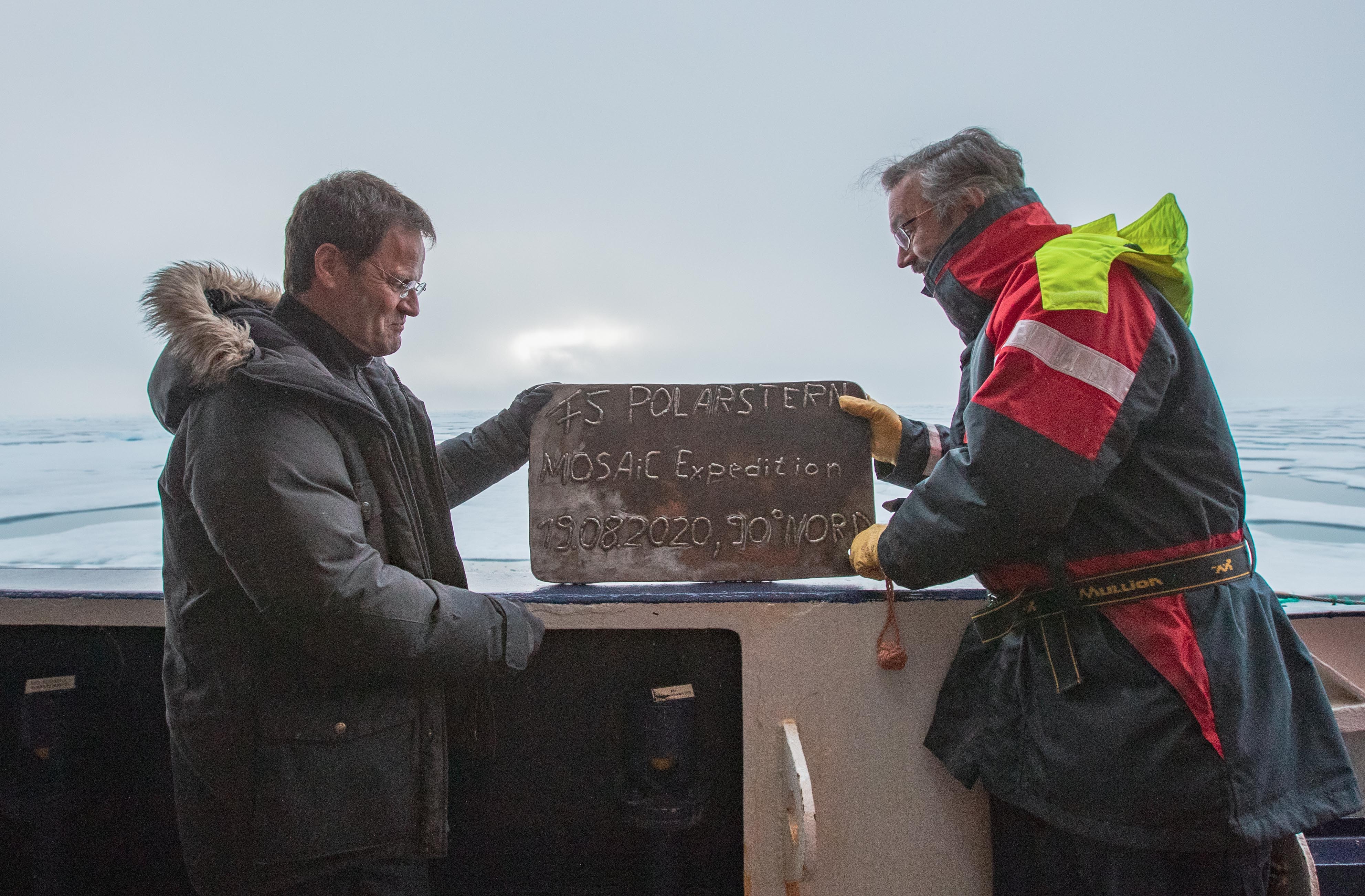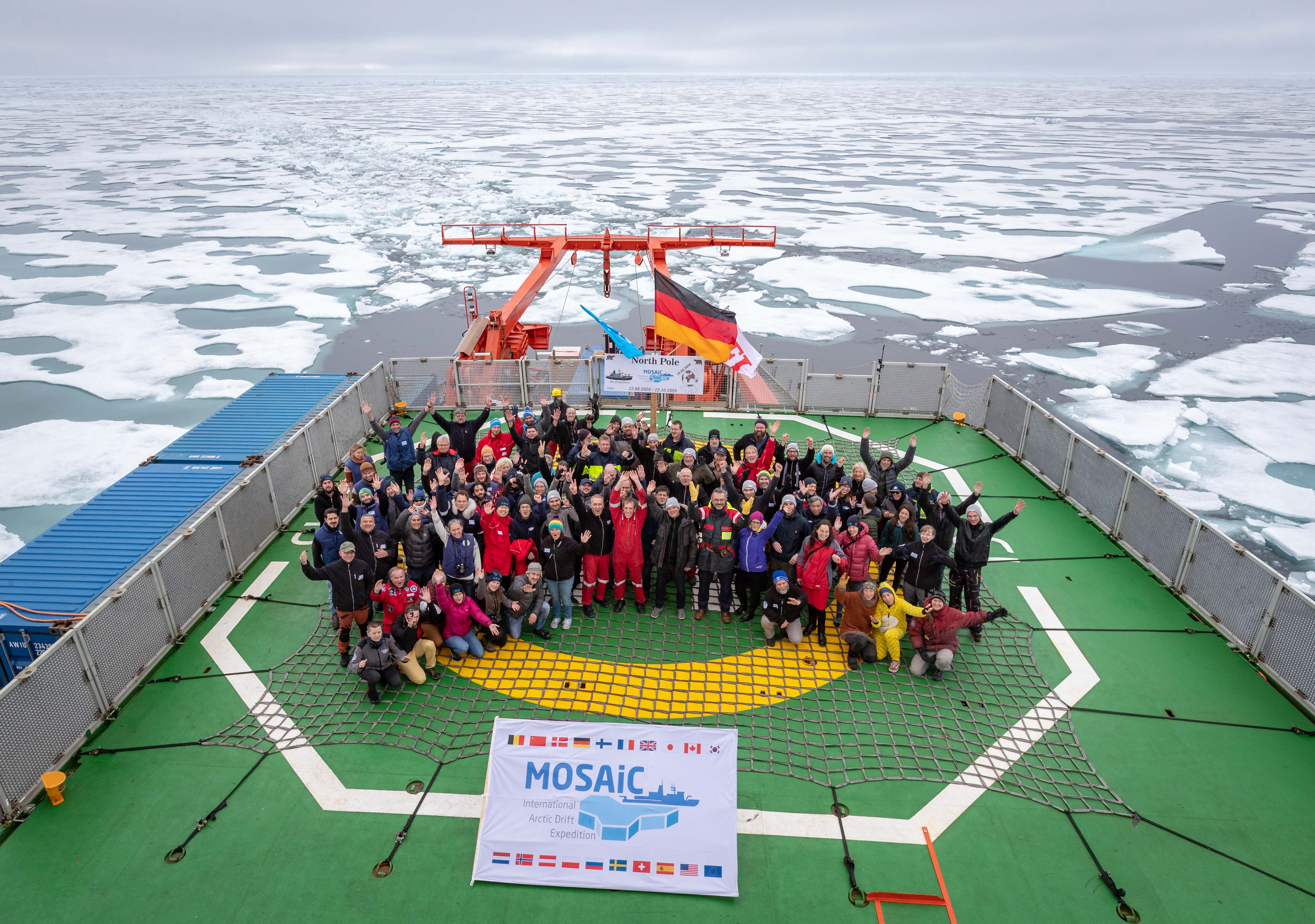MOSAiC Expedition Reaches the North Pole
Published: 20 August 2020
During the final leg of the expedition, the research vessel Polarstern reaches the northernmost point on the Earth

At 12:45 p.m. on August 19, 2020, the German research icebreaker Polarstern reached the North Pole. The ship followed a route to the north of Greenland—and through a region that, in the past, was densely covered with ice, including multiyear ice. The journey from the northern Fram Strait to the pole only took six days to complete. To mark this momentous event, countless members of the expedition team gathered on the bridge, where their eyes were glued to the position monitors, and then celebrated having reached the pole together.
This year satellite imagery indicated that, even past 87° North, the ice cover was surprisingly loose. Accordingly, MOSAiC Expedition Leader Prof. Markus Rex and Polarstern Captain Thomas Wunderlich decided to head north, starting from the position of the last resupply rendezvous in the northern Fram Strait between Greenland and Svalbard. “Up until 87° 30’ North, for the most part we passed through open water, in some cases stretching to the horizon,” recalls Prof. Markus Rex from the Alfred Wegener Institute (AWI), Helmholtz Centre for Polar and Marine Research.
“Based on the satellite imagery, at first we weren’t sure whether the loose ice cover was due to wind and currents, and were concerned that, if it was, a change in weather conditions could compact it again. Then we would have been caught in a mousetrap, and could have become trapped in the ice,” reports the MOSAiC expedition leader, who had previously reached the North Pole onboard a research aircraft, in 2000.

Once in the region, however, they found that much of the sea ice truly had melted away and hadn’t simply been broken up by the wind. This is yet another unique phenomenon that was observed and investigated during MOSAiC, following the substantially accelerated melting rates in the Siberian sector in July.
For the final phase of MOSAiC, the expedition team is focusing on the freezing phase: the last piece of the puzzle in terms of observing the arctic ice throughout its annual cycle. After the MOSAiC floe, as expected, broke up near the ice edge in Fram Strait in July, the team set course farther north, where the freezing phase will soon begin.
For more information, read the full AWI news release. To see MOSAiC photos, view AWI’s multimedia page.
On the Polarstern, instruments from the Atmospheric Radiation Measurement (ARM) user facility continue to collect data for the expedition, which is scheduled to end in October 2020.

Keep up with the Atmospheric Observer
Updates on ARM news, events, and opportunities delivered to your inbox
ARM User Profile
ARM welcomes users from all institutions and nations. A free ARM user account is needed to access ARM data.


















